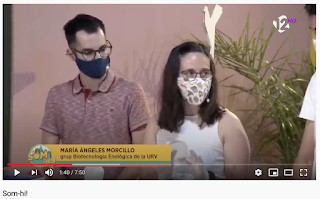Viability-PCR allows monitoring yeast population dynamics in mixed fermentations including viable but non-culturable yeasts
Yurena Navarro, M. Jesús Torija, Albert Mas, Gemma Beltran
Foods 2020, 9, 1373 : https://www.mdpi.com/2304-8158/9/10/1373
The use of mixed controlled inocula of Saccharomyces cerevisiae and non-Saccharomyces yeasts is becoming a common practice in winemaking. The control of the process requires better knowledge of yeast growth and interactions. Although S. cerevisiae is usually the dominant yeast at the end of mixed fermentations, some non-Saccharomyces species can also reach the later stages.
Some of these species may not grow in traditional culture media, which is a status known as Viable but not cultivable (VBNC). The presence of this VBNC status produces an underestimation of the final population. To avoid this problem, quantitative PCR (qPCR) has been found to be a good and sensitive method to determine the identity of the cell population. The main problem is that the amplification of DNA can also include dead cells.
Thus, viability dyes (such as PMAxx) have been proposed to avoid the amplification and, therefore, the quantification of DNA from non-viable cells. In this study we demonstrated that PMAxx coupled with qPCR is a reliable, specific and rapid method to accurately quantify the viable yeast species most commonly used.
We have used 4 different species (S. cerevisiae, T. delbrueckii, L. thermotolerans and M. pulcherrima) in mixed wine fermentations, to compare PMAxx-PCR to non-dyed qPCR and colony counting on differential medium. We have observed, for the first time, the entry into the VBNC status in L. thermotolerans and S. cerevisiae during alcoholic fermentation.




















